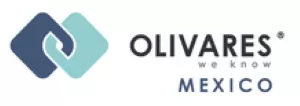Regarding Compulsory Licenses(CLs), the TRIPS Agreement is the "Bible; " it isn't everything, but it is the main legal frame.
CLs are granted by governments in sectors with market-correction needs. The key sector is health and includes medicine access, medicine production, and medicine reserve security. The health sector, however, isn't the only one granting CLs. They can also apply to food, security and ITdevelopment strategies.
The TRIPS, an IP trade agreement with minimum IP trade rules and without fully uniform standards, industrializes (develop the industry in relation with the powerful nations in the negotiations), who agree to dismantle the trade areas in customs regarding access to services, but with guarantees over IP.
The WTO TRIPS has an enforcement section (III,V) unlike the UN version that is only built on principles. Of course, if a country wants to belong to the WTO, it needs to sign the TRIPS, making it binding. The IP standards in the agreement (articles 9-39) link with WIPO-administered conventions (Paris and Berne). The enforcement section in the TRIPS says that the countries must have in their national laws civil, administrative and criminal regulations that respect the provisions of the agreement, aiming for national and international fair trade markets.
There is a minimum standard regime, included article 31 of the TRIPS, Other Use Without Authorization of the Right Holder, which establishes the necessary rules to be followed when seeking a CL, applied to all the categories of IP rights.
Between the TRIPS and the UN, the TRIPS has higher IP standards, supporting technical cooperation through WIPO, which is the reason why there are CLs included in the agreement. WIPO agreed and signed with the WTO to support countries with tech assistance to fulfill the provisions of the TRIPS, serving as the recipient of the notifications of the domestic laws, whereas the TRIPS council also serves as a dispute settlement authority regarding IP, with an internal justice system, as indicated in article 23 of the WTO.
In the legal debate, we can support article 7 (objectives) arguing that IP must promote technology to the mutual advantage of the two parties, in a manner conducive to social and economic welfare as well to a balance of rights and obligations. The principles are included in article 8, establishing that members in the formulation and expedition of their laws and regulations must adopt necessary measurements to protect public-health, nutrition and the public interest in sectors of vital importance for technological and socio-economic development, taking into account that such measures are consistent with the TRIPS.
Article (1)27 and its anti-health patents provision says that states must exclude certain categories related to health from patent material. Then, article (2)30 talks about the possible exceptions to exclusive rights of patentees - if there is not an unjustified prejudice, some limitations can be the possible exceptions to exclusive rights of patents, and article (3)40 says that patents must not be anti-competitive.
On the contrary, article 31, states that CLs must be granted further to a restrictive procedure, since patents are property rights, and its expropriation and limitation must be with restrictive rules. The Doha Decision adopted a special declaration regarding public-health, reaffirming the flexibilities of article 31 (TRIPS) that CLs will be absolute in any government, leaving freedom in exhaustion regimes (parallel import), postponing for needed countries the development of the TRIPS patent regime applicable to pharmaceuticals; requiring mechanisms without facilities of pharmaceutical production and mechanisms to get medicines, requiring discussions in traditional knowledge (including medicines).
Jerome Reichman explains in his article, The Post-Doha Decision, the issue of a CL process that permits any country needing medicines with lower prices than those established by the local patent owners, to ask other countries for assistance with the disposition to produce the medicines with export purposes without the interference of the rights owner. This solution was implemented in an extension known as the Decision of Aug. 30, 2003.
While competition law can provide useful tools in appropriate cases, there are also other tools that lie outside competition law. One is the Doha Waiver (and, eventually, an amendment scheme under pending article 31bis of the TRIPS Agreement). A second tool worth exploring is the Belgian model for compulsory licensing in the interest of public health under articles 8 and 30 of the TRIPS, rather than article 31 as such, although the legality of this route has yet to be tested by WTO tribunals. Countries implementing TRIPS legal basis+Doha+Post- Doha Decisions in their national patent laws regarding public health are India, Brazil, Canada and the European Union, permitting the reinforcement of scientific research exemption in patents and the establishment of CL in case of need.
Better solutions than article 31 are:
- As a possible retaliation mechanism for future unnecessary threats, like the case between the US and the EU, related to the Airbus and Boeing "war."
Other modalities of retaliation mechanisms: for example, if a government had tried to take possession of the COVID-19 vaccine, get the patent and not let other countries develop it. A more systematic use of the "bolar" provisions and parallel imports and attitude of pharmaceutical companies.
We need to keep in mind that a CL cannot be requested without motive. These are the necessary conditions for the license to be awarded:
I. Attempts to obtain a license under reasonable commercial conditions, including unfair pricing, have failed for a reasonable period of time;
I. Inactivity during an extended period in the patent area and failure or inability of a patent owner to comply with a patent product requirement;
III. Inability to take advantage of important technological advances, or exploit another patent; IV. National emergency or extremely urgent cases or non-commercial public-use cases. Alternatives can be off-patent regimes, generics, and the technical alternative of CLs (donations).
For example, according to the UK IP-law, a medicine with a UK patent is for sale in the UK. The countries that permit parallel import can look to another country where the patent is cheaper, buy the product there and then import it by the modality provided in the law.
It is essential for governments that are adopting the CL strategy to exercise caution at the moment of choosing the legal instruments best suited to accomplish their goals so they can resist international pressures and avoid legal action under the WTO, as Reichman states.
The IP waiver related to COVID-19 vaccines saw the general interest prevail not only in a few territories, but throughout the world, as mentioned by IBA (International Bar Association) President Horacio Bernardes Neto, "without a doubt, the manufacture and distribution of vaccines are complex, but the States of our shared planet must prioritize the protection of life and health above all else. Reaching agreements to stabilize this unprecedented global health emergency, while respecting property rights, is possible if the will exists."
In 2020, South-Africa presented a proposal to the WTO for the IP suspension of anti-COVID-19 vaccines so that other pharmaceutical companies around the world could make the vaccines without fear of receiving legal claims as a measure to solve the pandemic. However, it was mentioned that the mere suspension of IP was not enough, since the development of vaccines entails the need to acquire raw materials, know-how, technology and a great deal of infrastructure, not to mention the lengthy period of negotiations.
The IBA stated on May 21, 2021, that more immediate solutions were essential (increased production, licensing deals and richer nations distributing stock to lower income nations).
What should be very clear is that contrary to what many people believe, patents should not be considered as the "enemy" in this type of situation, but rather should be considered as the solution, since they promote pharmaceutical innovation, as mentioned in said statement. Hence, in Mexico and other parts of the world, the system was tested with a very low amount of CL because its application was no longer necessary.
We owe all the development and evolution of medicines and products to patents, since it is due to them that manufacturing companies have sufficient motivation to continue carrying out research and development, as patents are the gasoline of the vehicle called technological breakthrough. To conclude, coinciding with what was mentioned in the IBA statement, the main problem in a situation such as a global pandemic should not be attributed to patents, but to the great world demand for raw materials, technology and infrastructure. Although it should be clear, the prompt response of pharmaceutical companies around the world to obtain vaccines in such a short period of time was due to the stimulation that the patent system provides to the innovation industry.
The content of this article is intended to provide a general guide to the subject matter. Specialist advice should be sought about your specific circumstances.

